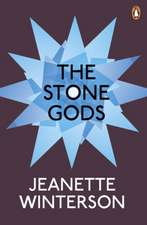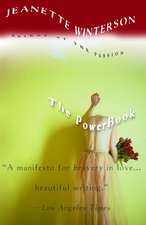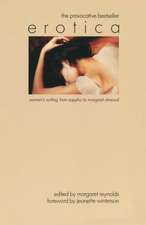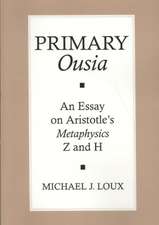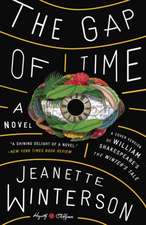Art Objects
Autor Jeanette Wintersonen Limba Engleză Paperback – 2 mai 1996
| Toate formatele și edițiile | Preț | Express |
|---|---|---|
| Paperback (2) | 66.61 lei 23-34 zile | +20.60 lei 7-13 zile |
| Vintage Publishing – 2 mai 1996 | 66.61 lei 23-34 zile | +20.60 lei 7-13 zile |
| Vintage Publishing – 31 ian 1997 | 101.17 lei 3-5 săpt. |
Preț: 66.61 lei
Preț vechi: 81.04 lei
-18% Nou
Puncte Express: 100
Preț estimativ în valută:
12.75€ • 13.17$ • 10.60£
12.75€ • 13.17$ • 10.60£
Carte disponibilă
Livrare economică 28 februarie-11 martie
Livrare express 12-18 februarie pentru 30.59 lei
Preluare comenzi: 021 569.72.76
Specificații
ISBN-13: 9780099590019
ISBN-10: 0099590018
Pagini: 208
Dimensiuni: 129 x 197 x 19 mm
Greutate: 0.15 kg
Ediția:New
Editura: Vintage Publishing
Locul publicării:United Kingdom
ISBN-10: 0099590018
Pagini: 208
Dimensiuni: 129 x 197 x 19 mm
Greutate: 0.15 kg
Ediția:New
Editura: Vintage Publishing
Locul publicării:United Kingdom
Notă biografică
Jeanette Winterson
Descriere
These interlocking essays uncover art as an active force in the world - neither elitist or remote, present to those who want it, affecting even those who don't. Winterson's own passionate vision of art is presented here - provocatively and personally in pieces on Modernism, autobiography, style, painting, the future of fiction, in two essays on Virginia Woolf, and more intimately in pieces where she describes her relationship to her work and the books that she loves.
Recenzii
"Jeanette Winterson is one of Britain's brightest alternative literary lights. Her quirky, madly poetic prose has won her a loyal cult following and a lot of respect from the mainstream. —H.J.Kirchhoff, The Globe and Mail
"Thrilling, persuasive, challenging and written with a skill and beauty entirely shorn of artifice...Should be bought, read, re-read and read out loud as often as possible." —The Edmonton Journal
"Brilliant essays, the finest I=ve read in years, a wonderful, timely endorsement of what art is and what it isn't. In 10 separate ways, from 10 different angles, she takes clear, intelligent aim at the modern wish that art be less arty, and more entertaining; that art be easier for people to chew and quickly digest...Should be required reading." —The Ottawa Citizen
"It is invigorating to read these essays by a woman who believes in art, full stop." —The Globe and Mail
"A delight...I find Winterson an invigorating critic, as well as an exhilarating literary soul mate...At a time when literary commentary is bogged down by dense, impenetrable post-modern and post-structuralist twaddle, Art Objects...offers itself as a breath of fresh thought and fresh expression." —Kitchener-Waterloo Record
"Brilliant, challenging, funny, highly personal." —Family Practice
"A witty, reasoned look at the power of, and our powerful need for, all forms of art." —The Ottawa Citizen
"A book of essays to set your intellect on fire." Bruce Powe, The Financial Post
"Potent.... Part soulful meditation and part fiery manifesto.... Ms. Winterson is a passionate writer.... Hers is a book born of a restless, uncompromising intelligence and a life of practicing what she preaches, of taking the kind of artistic risks she so fiercely espouses." —The New York Times Book Review
"Winterson is in fine form in these essays about art, arguing, admonishing, infuriating, teasing...She fights solemnly, beguilingly, for ecstasy and silence and the revival of our ability to contemplate...She says much that is important about energy and passion. Her stalwart defence of the modern is a challenge to the barrenness and niggliness with which we live." —The Observer, U.K.
"There is no denying the beauty and precision of her writing, nor the clarity of her expression...On her heroines — Stein, Woolf, Eliot, books themselves — she is particularly strong and passionate. Through it all, a central theme occurs: that art, true art, is and will remain a vital force, without which life is scarcely worthy of the name." —Time Out, U.K.
"Thrilling, persuasive, challenging and written with a skill and beauty entirely shorn of artifice...Should be bought, read, re-read and read out loud as often as possible." —The Edmonton Journal
"Brilliant essays, the finest I=ve read in years, a wonderful, timely endorsement of what art is and what it isn't. In 10 separate ways, from 10 different angles, she takes clear, intelligent aim at the modern wish that art be less arty, and more entertaining; that art be easier for people to chew and quickly digest...Should be required reading." —The Ottawa Citizen
"It is invigorating to read these essays by a woman who believes in art, full stop." —The Globe and Mail
"A delight...I find Winterson an invigorating critic, as well as an exhilarating literary soul mate...At a time when literary commentary is bogged down by dense, impenetrable post-modern and post-structuralist twaddle, Art Objects...offers itself as a breath of fresh thought and fresh expression." —Kitchener-Waterloo Record
"Brilliant, challenging, funny, highly personal." —Family Practice
"A witty, reasoned look at the power of, and our powerful need for, all forms of art." —The Ottawa Citizen
"A book of essays to set your intellect on fire." Bruce Powe, The Financial Post
"Potent.... Part soulful meditation and part fiery manifesto.... Ms. Winterson is a passionate writer.... Hers is a book born of a restless, uncompromising intelligence and a life of practicing what she preaches, of taking the kind of artistic risks she so fiercely espouses." —The New York Times Book Review
"Winterson is in fine form in these essays about art, arguing, admonishing, infuriating, teasing...She fights solemnly, beguilingly, for ecstasy and silence and the revival of our ability to contemplate...She says much that is important about energy and passion. Her stalwart defence of the modern is a challenge to the barrenness and niggliness with which we live." —The Observer, U.K.
"There is no denying the beauty and precision of her writing, nor the clarity of her expression...On her heroines — Stein, Woolf, Eliot, books themselves — she is particularly strong and passionate. Through it all, a central theme occurs: that art, true art, is and will remain a vital force, without which life is scarcely worthy of the name." —Time Out, U.K.
Extras
Art takes time. To spend an hour looking at a painting is difficult. The public gallery experience is one that encourages art at a trot. There are the paintings, the marvellous speaking works, definite, independent, each with a Self it would be impossible to ignore, if...if..., it were possible to see it. I do not only mean the crowds and the guards and the low lights and the ropes, which make me think of freak shows, I mean the thick curtain of irrelevances that screens the painting from the viewer. Increasingly, galleries have a habit of saying when they acquired a painting and how much it cost...
Millions! The viewer does not see the colours on the canvas, he sees the colour of the money.
Is the painting famous? Yes! Think of all the people who have carefully spared one minute of their lives to stand in front of it.
Is the painting Authority? Does the guide-book tell us that it is part of The Canon? If Yes, then half of the viewers will admire it on principle, while the other half will dismiss it on principle.
Who painted it? What do we know about his/her sexual practices and have we seen anything about them on the television? If not, the museum will likely have a video full of schoolboy facts and tabloid gossip.
Where is the tea-room/toilet/gift shop?
Where is the painting in any of this?
Experiencing paintings as moving pictures, out of context, disconnected, jostled, over-literary, with their endless accompanying explanations, over-crowded, one against the other, room on room, does not make it easy to fall in love. Love takes time. It may be that if you have as much difficulty with museums as I do, that the only way into the strange life of pictures is to expose yourself to as much contemporary art as you can until you find something, anything, that you will go back and back to see again, and even make great sacrifices to buy. Inevitably, if you start to even make great sacrifices to buy. Inevitably, if you start to love pictures, you will start to buy pictures. The time, like the money, can be found, and those who call the whole business élitist, might be fair enough to reckon up the time they spend in front of the television, at the DIY store, and how much the latest satellite equipment and new PC has cost.
For myself, now that paintings matter, public galleries are much less dispiriting. I have learned to ignore everything about them, except for the one or two pieces with whom I have come to spend the afternoon.
Supposing we made a pact with a painting and agreed to sit down and look at it, on our own with no distractions, for one hour. The painting should be an original, not a reproduction, and we should start with the advantage of liking it, even if only a little. What would we find?
Increasing discomfort. When was the last time you looked at anything, solely, and concentratedly, and for its own sake? Ordinary life passes in a near blur. If we go to the theatre or the cinema, the images before us change constantly, and there is the distraction of language. Our loved ones are so well known to us that there is no need to look at them, and one of the gentle jokes of married life is that we do not. Nevertheless, here is a painting and we have agreed to look at it for one hour. We find we are not very good at looking.
Increasing distraction. Is my mind wandering to the day's work, to the football match, to what's for dinner, to sex, to whatever it is that will give me something to do other than to look at the painting?
Increasing invention. After some time spent daydreaming, the guilty or the dutiful might wrench back their attention to the picture.
What is it about? Is it a landscape? Is it figurative? More promisingly, is it a nude? If the picture seems to offer an escape route then this is the moment to take it. I can make up stories about the characters on the canvas much as art-historians like to identify the people in Rembrandt's The Night Watch. Now I am beginning to feel much more confident because I am truly engaging with the picture. A picture is its subject matter isn't it? Oh dear, mine's an abstract. Never mind, would that pink suit me?
Increasing irritation. Why doesn't the picture do something? Why is it hanging there staring at me? What is this picture for? Pictures should give pleasure but this picture is making me very cross. Why should I admire it? Quite clearly it doesn't admire me...
Admire me is the sub-text of so much of our looking; the demand put on art that it should reflect the reality of the viewer. The true painting, in its stubborn independence, cannot do this, except coincidentally. Its reality is imaginative not mundane.
When the thick curtain of protection is taken away; protection of prejudice, protection of authority, protection of trivia, even the most familiar of paintings can begin to work its power. There are very few people who could manage an hour alone with the Mona Lisa.
But our poor art-lover in his aesthetic laboratory has not succeeded in freeing himself from the protection of assumption. What he has found is that the painting objects to his lack of concentration; his failure to meet intensity with intensity. He still has not discovered anything about him. He is inadequate and the painting has told him so.
It is not as hopeless as it seems. If I can be persuaded to make the experiment again (and again and again), something very different might occur after the first shock of finding out that I do not know how to look at pictures, let alone how to like them.
A favourite writer of mine, an American, an animal trainer, a Yale philosopher, Vicki Hearne, has written of the acute awkwardness and embarrassment of those who work with magnificent animals, and find themselves at a moment of reckoning, summed up in those deep and difficult eyes and for many the gaze is too insistent. Better to pretend that art is dumb, or at least has nothing to say that makes sense to us. If art, all art, is concerned with truth, then a society in denial will not find much in use for it.
In the West, we avoid painful encounters with art by trivialising it, or by familiarising it. Our present obsession with the past has the double advantage of making new work seem raw and rough compared to the cosy patina of tradition, whilst refusing tradition its vital connection to what is happening now. By making islands of separation out of the unbreakable chain of human creativity, we are able to set up false comparisons, false expectations, all the while lamenting that the music, poetry, painting, prose, performance art of Now, fails to live up to the art of Then, which is why, we say, it does not affect us. In fact, we are no more moved by a past we are busy inventing, than by a present we are busy denying. If you love a Cézanne, you can love a Hockney, can love a Boyd, can love a Rao. If you love a Cézanne rather than lip-service it.
Millions! The viewer does not see the colours on the canvas, he sees the colour of the money.
Is the painting famous? Yes! Think of all the people who have carefully spared one minute of their lives to stand in front of it.
Is the painting Authority? Does the guide-book tell us that it is part of The Canon? If Yes, then half of the viewers will admire it on principle, while the other half will dismiss it on principle.
Who painted it? What do we know about his/her sexual practices and have we seen anything about them on the television? If not, the museum will likely have a video full of schoolboy facts and tabloid gossip.
Where is the tea-room/toilet/gift shop?
Where is the painting in any of this?
Experiencing paintings as moving pictures, out of context, disconnected, jostled, over-literary, with their endless accompanying explanations, over-crowded, one against the other, room on room, does not make it easy to fall in love. Love takes time. It may be that if you have as much difficulty with museums as I do, that the only way into the strange life of pictures is to expose yourself to as much contemporary art as you can until you find something, anything, that you will go back and back to see again, and even make great sacrifices to buy. Inevitably, if you start to even make great sacrifices to buy. Inevitably, if you start to love pictures, you will start to buy pictures. The time, like the money, can be found, and those who call the whole business élitist, might be fair enough to reckon up the time they spend in front of the television, at the DIY store, and how much the latest satellite equipment and new PC has cost.
For myself, now that paintings matter, public galleries are much less dispiriting. I have learned to ignore everything about them, except for the one or two pieces with whom I have come to spend the afternoon.
Supposing we made a pact with a painting and agreed to sit down and look at it, on our own with no distractions, for one hour. The painting should be an original, not a reproduction, and we should start with the advantage of liking it, even if only a little. What would we find?
Increasing discomfort. When was the last time you looked at anything, solely, and concentratedly, and for its own sake? Ordinary life passes in a near blur. If we go to the theatre or the cinema, the images before us change constantly, and there is the distraction of language. Our loved ones are so well known to us that there is no need to look at them, and one of the gentle jokes of married life is that we do not. Nevertheless, here is a painting and we have agreed to look at it for one hour. We find we are not very good at looking.
Increasing distraction. Is my mind wandering to the day's work, to the football match, to what's for dinner, to sex, to whatever it is that will give me something to do other than to look at the painting?
Increasing invention. After some time spent daydreaming, the guilty or the dutiful might wrench back their attention to the picture.
What is it about? Is it a landscape? Is it figurative? More promisingly, is it a nude? If the picture seems to offer an escape route then this is the moment to take it. I can make up stories about the characters on the canvas much as art-historians like to identify the people in Rembrandt's The Night Watch. Now I am beginning to feel much more confident because I am truly engaging with the picture. A picture is its subject matter isn't it? Oh dear, mine's an abstract. Never mind, would that pink suit me?
Increasing irritation. Why doesn't the picture do something? Why is it hanging there staring at me? What is this picture for? Pictures should give pleasure but this picture is making me very cross. Why should I admire it? Quite clearly it doesn't admire me...
Admire me is the sub-text of so much of our looking; the demand put on art that it should reflect the reality of the viewer. The true painting, in its stubborn independence, cannot do this, except coincidentally. Its reality is imaginative not mundane.
When the thick curtain of protection is taken away; protection of prejudice, protection of authority, protection of trivia, even the most familiar of paintings can begin to work its power. There are very few people who could manage an hour alone with the Mona Lisa.
But our poor art-lover in his aesthetic laboratory has not succeeded in freeing himself from the protection of assumption. What he has found is that the painting objects to his lack of concentration; his failure to meet intensity with intensity. He still has not discovered anything about him. He is inadequate and the painting has told him so.
It is not as hopeless as it seems. If I can be persuaded to make the experiment again (and again and again), something very different might occur after the first shock of finding out that I do not know how to look at pictures, let alone how to like them.
A favourite writer of mine, an American, an animal trainer, a Yale philosopher, Vicki Hearne, has written of the acute awkwardness and embarrassment of those who work with magnificent animals, and find themselves at a moment of reckoning, summed up in those deep and difficult eyes and for many the gaze is too insistent. Better to pretend that art is dumb, or at least has nothing to say that makes sense to us. If art, all art, is concerned with truth, then a society in denial will not find much in use for it.
In the West, we avoid painful encounters with art by trivialising it, or by familiarising it. Our present obsession with the past has the double advantage of making new work seem raw and rough compared to the cosy patina of tradition, whilst refusing tradition its vital connection to what is happening now. By making islands of separation out of the unbreakable chain of human creativity, we are able to set up false comparisons, false expectations, all the while lamenting that the music, poetry, painting, prose, performance art of Now, fails to live up to the art of Then, which is why, we say, it does not affect us. In fact, we are no more moved by a past we are busy inventing, than by a present we are busy denying. If you love a Cézanne, you can love a Hockney, can love a Boyd, can love a Rao. If you love a Cézanne rather than lip-service it.







